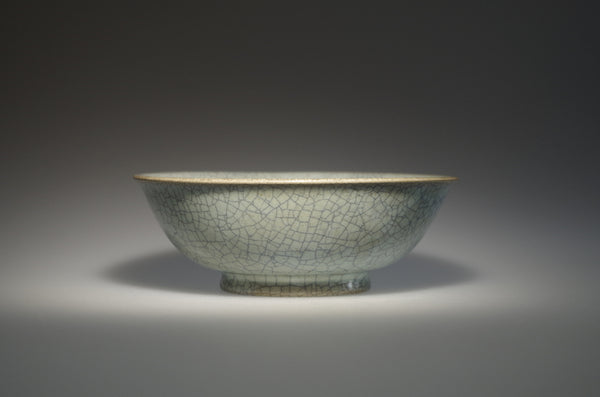The story of the teapot in China begins at the same time as does the story of Chinese porcelain. During the Song Dynasty Henan was the cultural and economic center of the Song Empire, and much importance was placed on improving the arts during the time. Hence, during the Song Dynasty, many pottery kilns were built, and the craft of porcelain ware was perfected.
The History Of Ru Yao Porcelain
Ru ware (Ru Yao) was one of the pottery types that emerged during the time, and up to today, it is still the most revered one. During the 1100s, Ru ware was made solely for the Imperial Court. Nowadays, less than 100 examples of the original ware survived, modern-day potters have been able to replicate the original Ru pottery style quite well.
One of the most iconic characteristics of Ru porcelain ware is the color, often referred to as pale duck egg blue.
It has also been poetically referred to as "the blue of the sky in a clearing amongst the clouds after rain" in ancient findings.
Ru ware is identified as one of the Five Great Kilns. These were pottery styles produced during the Song Dynasty, which were deeply esteemed. The five pottery styles were elegant, thin, and generally used light colors without any paintings or drawings. These wares were reserved for the Imperial Court. Individual pieces that were not chosen to be used by the Emperor were kept to be given as gifts to nobles or sometimes even for sale to a broader market. Although even this was rare.

Ru ware was the first official pottery to be commissioned by the Imperial Court. The ceramics, which were given to the imperial court, gradually made pottery practically a form of tax.
It is considered that Ru ware was only made during a very short period of time, approximately from 1086 to 1106. After that, the Warring period came, and the pottery industry greatly suffered. Even with such a short-lived history, the revere of Ru ware continues to live on to this day. The particular porcelain pottery style is much admired by tea enthusiasts and art collectors alike. 

Ru Yao Porcelain Kyusu Teapot
To create such a pleasing Chinese porcelain color, iron oxide is used in the glaze. The pottery's lustrous appearance is a signature that will continue to shine for many years. The particular style belongs to a broader group called celadon in pottery, which, along with Ru Yao's pale blue, encompasses a range of greenish glazes varying from yellow through turquoise to dark ocra.
The delicate cracks appear when the ware is fired at a particular temperature. It is a unique technique to get the cracks to appear ever so slightly. If the cracks are too prominent - it is not safe to use with food or drink as it can promote the growth of mold and bacteria. Fine cracks like the ones seen on Ru ware are completely safe.
After continuous use, the color of the tea brew will start to seep into the cracks, changing the color and seasoning the teapot. This is a sign of a diligently used teapot and is much honored in the world of tea.
Our Ru Yao Porcelain teapot is built with a side handle. The art of making side-handled teapots originated in, you guessed it… Song Dynasty China! The side-handled teapot made its way to Japan, where it was perfected. While in the west, we refer to this teapot style as kyusu, it can be quite misleading as all teapots in Japan are called kyusu. To be more specific, a yokode kyusu is the Japanese word used for a teapot with a side handle.
Read more about kyusu here.
Using A Chinese Porcelain Teapot
One good thing about using porcelain teaware, is that you can use it with any type of tea! Porcelain does not absorb any flavors or smell. Plus, it is easy to clean. This is one of the reasons why it's frequently used in tea tastings and tea competitions. It won't absorb or impart any undesired taste. However, it is important to carefully clean all porcelain teaware after each use with hot water (no soaps or detergents).
Read more: The Best Teaware For Different Types of Tea